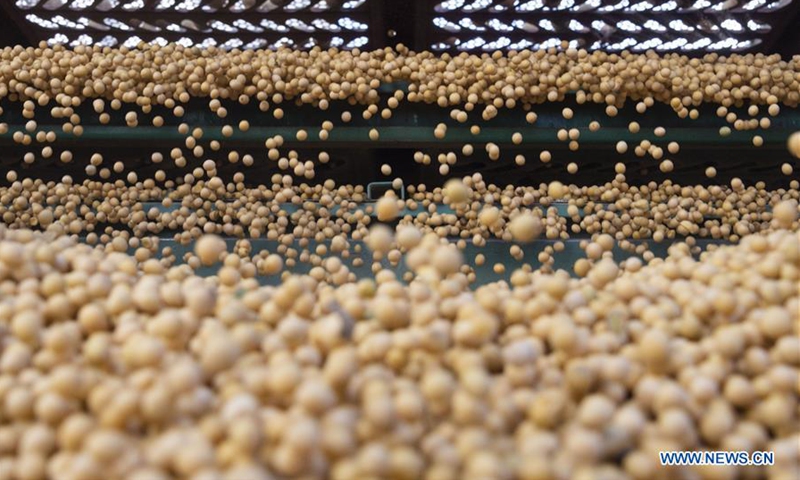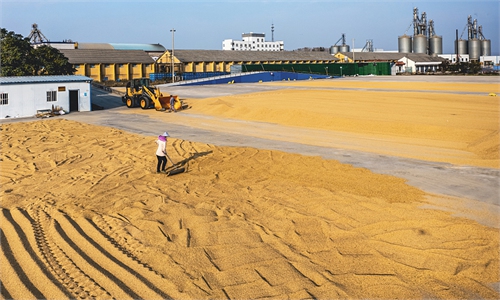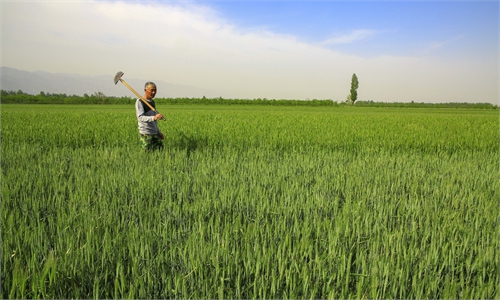
Newly procured soybeans are transferred to silos of China Grain Reserves Group in Harbin, northeast China's Heilongjiang Province, Nov. 8, 2019. A new round of food grain procurement in the autumn period is ongoing in Heilongjiang Province, China's top grain producer.Photo:Xinhua
China will mull over multiple measures this year to increase production capacity of soybean and other oilseeds, including improving subsidy mechanism for soybean farmers, actively guiding farmers in Northeast China - a main production base - to expand soybean cultivation area and promoting advanced soybean-corn intercropping agricultural technology, Chinese agricultural officials said on Wednesday, after the release of the No.1 central document that focuses on food security.
"We will improve subsidizing policy for soybean and corn producers, and support the proper rotation between soybean and corn in Northeast China to guide farmers plant more soybeans in spring sowing," Tang Renjian, Minister of Agriculture and Rural Affairs, said at a press briefing for the State Council, China's cabinet, on Wednesday.
China on Tuesday unveiled the long-anticipated No. 1 central document on rural revitalization. The annual rural policy blueprint, anchoring "firmly holding the bottom line of guaranteeing China's grain security," included detailed efforts to expand output of soybeans and other oilseeds across China.
Tang said for its next step, China should mobilize both markets at home and abroad to scale up the supply of soybean and oil on the one hand. On the other hand, it is more important to address structural issue and beef up the domestic production of soybean and oil crops, to make oil bottle "filling up with as much homegrown oil as possible."He said the country aims to see "a significant rise" in self-sufficiency of soybean and other oilseeds within five to 10 years.
According to Tang, authorities will also encourage farmers in Northeast China to plant soybeans in arable land which was used for rice yet whose conditions are not suitable for such crop.
Another measure is to actively facilitate soybean-corn intercropping, which refers to planting two lines of corn and four lines of soybean in farmland that ensures both stable corn and soybean output.
This technology to date has been trialed in 7 million mu (466,700 hectares) of farmland, and Tang said the technology will be further applied in suitable farming area across Southwest and Northwest China.
"China will also strengthen accompanying services in seeds, machinery and financing. In some regions such planting technology may be included in the terms of agricultural insurance," Tang noted.
In 2021, China imported more than 90 million tons of soybeans, and the volume in 2020 was over 100 million tons, customs data showed. The imported soybeans are used in making edible oil and animal feed protein.
Global Times


